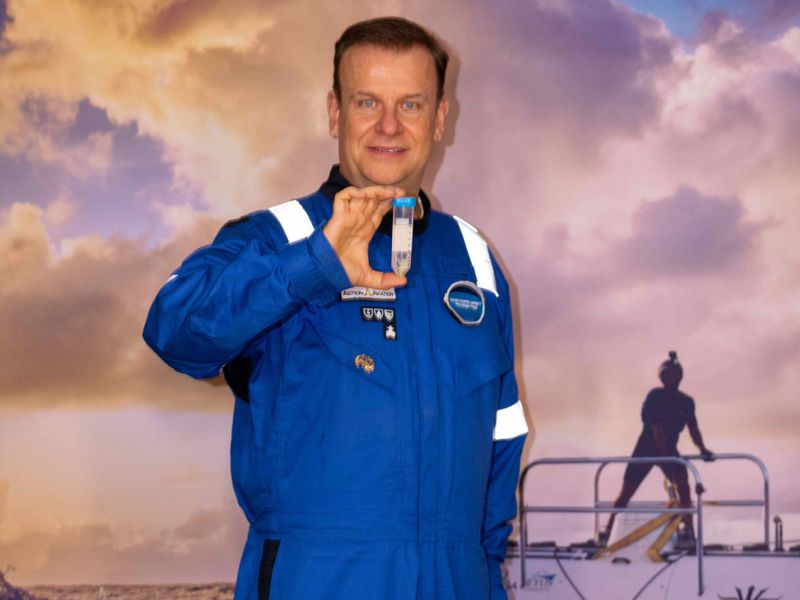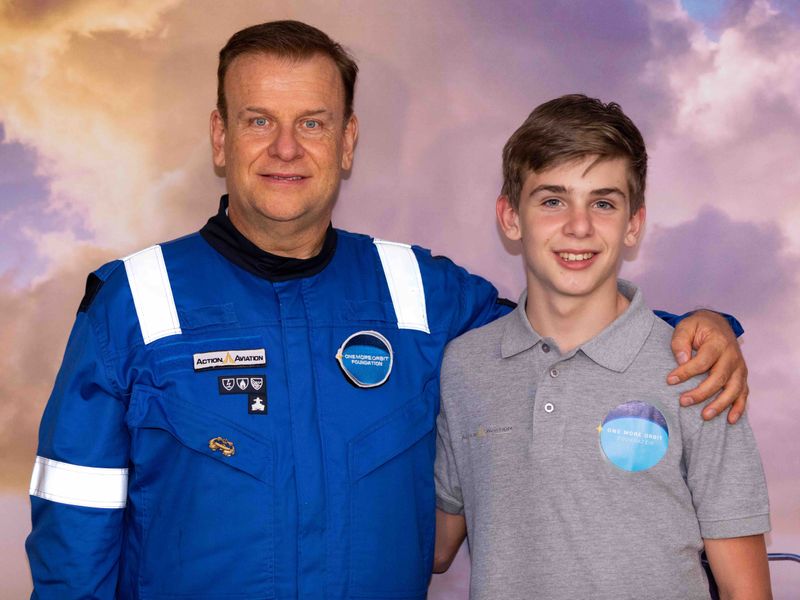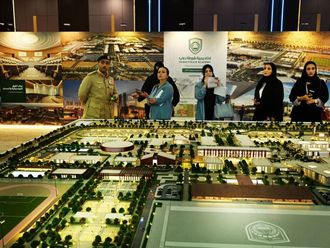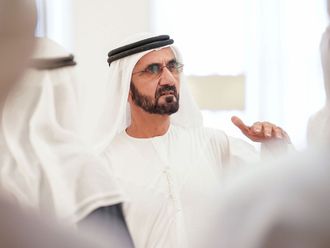
Dubai: The Guinness World Records has confirmed that Dubai-based expatriate Hamish Harding and renowned ocean explorer Victor Vescovo have been added to the record books as the first humans to successfully traverse the full length of the deepest section of the Challenger Deep — the deepest point on Earth.
Using a purpose-built DSV Limiting Factor, a two-person deep-submergence vehicle built by Triton Submarines, the duo made the dive on March 5 to set two new world records for achieving the greatest distance travelled at Full Ocean Depth and greatest duration spent at Full Ocean Depth, at four hours and 15 minutes.
The average depth of the ocean is about 12,100 feet. Harding and Vescovo achieved the feat by exploring Challenger Deep — the lowest point on Earth located at the Mariana Trench which, at nearly 11km deep — or 10,925 metres to be exact — is equivalent to 13 times the height of Burj Khalifa, the world’s tallest tower!
Speaking to Gulf News from his home in Dubai after returning from the expedition, Harding said: “It was an incredibly hostile environment. To travel to parts of the Challenger Deep where no human had ever been before was truly remarkable. The Challenger Deep is an incredibly hostile environment and so little is known about life on the ocean floor.”

He added: “To discover both a potential new species and unmapped territory so far below sea level and to set two new Guinness World Records is a once-in-a-lifetime achievement. I hope it will also inspire others to push the boundaries of what is possible.”
8,000 double-decker buses on top of a human
Harding gave a more graphic description on how it was to be at the deepest point underneath an ocean. “It was the equivalent of 8,000 double-decker buses or 300 jumbo jets on top of a human,” he said.
To demonstrate further, Harding showed to Gulf News a styrofoam cup that was attached outside the submersible during the dive. It was crushed to a quarter of its original size, proving how hard the pressure was — 1,200 times more than the standard atmospheric pressure at sea level.
The mission itself was not without its tense moments. Because Challenger Deep’s floor is not flat as previously thought, the submersible was forced to ascend around 800 metres to clear an unmapped mountainous plateau with a shape resembling South Africa’s Table Mountain.
Harding said: “Things can go wrong typically down there — electronics don’t work, there could be mechanical problems and failures, but the submersible was well-designed. The expedition’s submersible, the Triton-built DSV Limiting Factor, has been designed to withstand 100,000 tonnes of atmospheric pressure at Full Ocean Depth with its purpose-built 90mm thick titanium sphere.”
Harding is the 16th person to dive to the bottom of the Challenger Deep in 60 years, as compared to 24 astronauts who have orbited or landed on the moon and thousands who have successfully climbed Mount Everest. He said the first submersible was a United States Navy vessel called the Trieste that descended to the ocean floor in 1960 and spent 20 minutes before ascending. While in 2012, Hollywood director James Cameron was the first to make a solo manned descent aboard DSV Deepsea Challenger. Harding and Vescovo used a submersible that can undertake repeat trips to full ocean depth and traverse to the bottom of the ocean for significant periods of time.
The overall mission took 12 hours — four hours to dive and reach the bottom of the ocean at a speed of one metre of descent per second. Then Harding and Vescovo traversed 4.5 miles (7.2km) across the trench for another four hours, before ascending to the surface for an additional four hours.
Life at the bottom of the ocean
Harding showed Gulf News a creature he brought back from the bottom of Challenger Deep. Resembling an amphipod, a tiny shrimp-like crustacean that scavenge on the seabed, the marine invertebrate was found 10.9km below sea level at atmospheric pressures 1,200 times higher than what is experienced above water. The creature was captured by one of the two robotic landers, named CLOSP and FLERE, that were used by the submersible to triangulate sonar returns and navigate the bottom of the ocean.
“Creatures live at the bottom of Mariana Trench and I saw some of them with my own eyes,” an excited Harding said, adding: “These creatures are hollow and water flows through them. Ongoing analysis of the creatures collected during the exploration is taking place onboard the mission’s support vessel, the DSSV Pressure Drop.”
Harding added: “At Challenger Deep, we did not see any large-scale pollution in terms of tin cans or plastic bags as you see in so many parts of the ocean, but extensive water samples were taken during the dive and sent for analysis to Newcastle University in the United Kingdom for research such as microplastics testing. We do expect microplastics in the water and sadly the world’s oceans have been polluted tremendously by plastics that eventually enter the food chain — as fish eat them and we are eating fish.”
$1 million price tag
It took two years before Harding accomplished the mission. He had originally planned to do the dive last year but was delayed because of the global pandemic. The entire journey, including the intensive training aboard the submersible, took ten days.
Harding told Gulf News the total cost of building the submersible and the mother ship (DSSV Pressure Drop) that was converted from a US navy hunting ship was $55 million (Dh202.29 million) and each dive, once you have the submersible, cost around $1 million. Harding did not disclose how much was exactly spent, but his company, Action Aviation — where he is the chairman — sponsored his expedition. Harding noted: “With the recent success of its Hope Probe, the UAE has proved the impossible is possible and as a long-term resident, I hope my achievement will in some small part contribute to the country’s reputation in science and exploration.”

Father-son adventure duo
Harding’s 13-year-old son, Giles, was also on the mission. He stayed aboard DSSV Pressure Drop to document his father’s quest. Giles, a Year 9 student at Dubai College, told Gulf News: “I’m really very proud of my Dad. I also did my best documenting the exploration and I had to learn how to operate cameras quickly. During the first days, I felt seasick because waves were rocking the ship hard back and forth, but eventually my body got used to it.”
Giles also performed cognitive experiments on his father at both the surface and full ocean depth to understand the cognitive effects such extreme environments can have on the human body. The result of these experiments will be revealed in due course.
Giles, who frequently joins his father on expeditions, himself is an achiever. He is the youngest person to have reached the South Pole in 2020 when he was just 12.
The father and son are planning to land a light aircraft on the North Pole for their next adventure.








